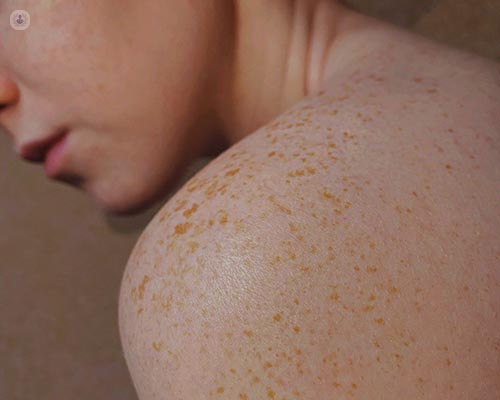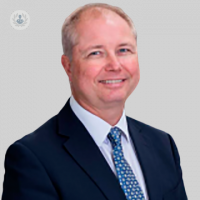Biologics for tendon repair: an overview
Written by:Biologics for tendon repair refer to biological substances, like growth factors, cytokines, collagen scaffolds or stem cells to enhance the healing process of damaged tendons. These substances are often derived from living organisms and can stimulate tissue regeneration, reduce inflammation, and promote better tendon healing.
Biologics offer a promising alternative to traditional treatments by harnessing the body's natural healing mechanisms for more effective tendon repair or to augment mechanical techniques to strengthen the repair.. Leading consultant orthopaedic surgeon Mr Andrew Chambler explains more about the procedure.

What is meant by biologics for tendon repair?
Biologics for tendon repair refer to the use of tissue - collagen grafts - to induce and enhance healing of tendons that have been repaired with anchors and sutures.
These substances are often derived from living organisms and can stimulate tissue regeneration, reduce inflammation, and promote better tendon healing. Biologics offer a promising alternative to traditional treatments by harnessing the body's natural healing mechanisms for more effective tendon repair.
How effective is this method for tendon repairs?
This method for tendon repairs is extremely effective. Research demonstrates that following repair, there is a reduced re-tear rate of repairs, and in some instances inducing healing of partially torn tendons without the need for mechanical repair.
Who is the ideal candidate?
The ideal candidates for biologics for tendon repair are typically individuals with a rotator cuff injury, chronic tendon injuries or conditions such as tendinopathy or tendon tears that have not responded well to conservative treatments like rest, physical therapy, or medication. These individuals may include athletes, active individuals, or those with repetitive stress injuries. Additionally, candidates should be in overall good health and may benefit from the regenerative properties of biologics to support and expedite tendon healing.
What is recovery like?
Surgery for tendon repair can often be completed as a day-case procedure, allowing patients to return home shortly after. Following surgery, patients typically wear a sling for approximately 2-3 weeks before beginning a structured rehabilitation programme. However, it's important to note that achieving maximal recovery can be a gradual process, spanning up to 9 months.
During this time, patients undergo various stages of healing, rehabilitation, and strengthening exercises to optimise the outcome of the procedure and regain full function of the affected tendon.
What are the associated benefits and risks?
The advantages of using these techniques include a more rapid recovery, surpassing traditional methods, and a decrease in the incidence of re-tears, as indicated by a recent study conducted in Madrid. Moreover, extensive research has shown that incorporating these grafts poses no additional risks. Many studies conducted worldwide have evaluated various implants, affirming their safety and efficacy in tendon repair procedures.
If you would like to book a consultation with Mr Chamble, do not hesitate to do so by visiting his Top Doctors profile today.


